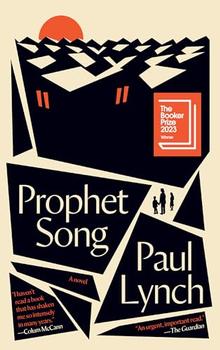
A Chernobyl Guide to the Future
by Kate Brown
A chilling exposé of the international effort to minimize the health and environmental consequences of nuclear radiation in the wake of Chernobyl.
Dear Comrades! Since the accident at the Chernobyl power plant, there has been a detailed analysis of the radioactivity of the food and territory of your population point. The results show that living and working in your village will cause no harm to adults or children.
So began a pamphlet issued by the Ukrainian Ministry of Health - which, despite its optimistic beginnings, went on to warn its readers against consuming local milk, berries, or mushrooms, or going into the surrounding forest. This was only one of many misleading bureaucratic manuals that, with apparent good intentions, seriously underestimated the far-reaching consequences of the Chernobyl nuclear catastrophe.
After 1991, international organizations from the Red Cross to Greenpeace sought to help the victims, yet found themselves stymied by post-Soviet political circumstances they did not understand. International diplomats and scientists allied to the nuclear industry evaded or denied the fact of a wide-scale public health disaster caused by radiation exposure. Efforts to spin the story about Chernobyl were largely successful; the official death toll ranges between thirty-one and fifty-four people. In reality, radiation exposure from the disaster caused between 35,000 and 150,000 deaths in Ukraine alone.
No major international study tallied the damage, leaving Japanese leaders to repeat many of the same mistakes after the Fukushima nuclear disaster in 2011. Drawing on a decade of archival research and on-the-ground interviews in Ukraine, Russia, and Belarus, Kate Brown unveils the full breadth of the devastation and the whitewash that followed. Her findings make clear the irreversible impact of man-made radioactivity on every living thing; and hauntingly, they force us to confront the untold legacy of decades of weapons-testing and other nuclear incidents, and the fact that we are emerging into a future for which the survival manual has yet to be written.
"Starred Review. Readers will be fascinated by this provocative history of a deadly accident and its consequences." - Publishers Weekly
"Starred Review. This sobering book should be read - and studied - by policymakers and citizens; pair with Adam Higginbotham's Midnight in Chernobyl to spark a renewed debate over nuclear power." - Kirkus
"A remarkable book, distinguished by formidable archival history, investigative research, and vivid storytelling. Parts of it grip with the force of a thriller - but again and again, the plot is proved true. A decade's work has gone into uncovering the real human cost of Chernobyl. Yet this is a book about even bigger subjects than the disaster at its core: about how politics processes disaster, about the unseen legacies of the 'friendly atom,' and about the Anthropocene futures faced by the human species, surviving in an epoch of ruin." - Robert Macfarlane, author of The Old Ways: A Journey on Foot
"Kate Brown presents a convincing challenge to the official narrative of the Chernobyl disaster. Deeply reported and elegantly written, Manual for Survival is chilling." - Elizabeth Kolbert, Pulitzer Prize–winning author of The Sixth Extinction: An Unnatural History
"Combining the skills of a historian, investigative reporter, and detective, Kate Brown has blown the lid off the 1986 Chernobyl nuclear disaster and decades of official efforts to suppress its grim truths. Disturbing in its conclusions, destined to incite controversy, Manual for Survival is first-rate historical sleuthing." - J. R. McNeill, coauthor of The Great Acceleration: An Environmental History of the Anthropocene since 1945
"Gripping…Kate Brown's relentless, tenacious reporting shows that Chernobyl isn't the past at all. Nothing, she makes clear, can stop its radiation from seeping through all attempts to bury the truth for a long time to come. This deftly written, impassioned, courageous book should make the world think twice about what's at stake when we unleash nuclear reactions." - Alan Weisman, author, The World Without Us and Countdown: Our Last, Best Hope for a Future on Earth?
"This engagingly written book reads like a cold war thriller and uncovers the devastating effects of one of the world's worst nuclear disasters." - Alison MacFarlane, director, Institute for International Science and Technology Policy, George Washington University
This information about Manual for Survival was first featured
in "The BookBrowse Review" - BookBrowse's membership magazine, and in our weekly "Publishing This Week" newsletter. Publication information is for the USA, and (unless stated otherwise) represents the first print edition. The reviews are necessarily limited to those that were available to us ahead of publication. If you are the publisher or author and feel that they do not properly reflect the range of media opinion now available, send us a message with the mainstream reviews that you would like to see added.
Any "Author Information" displayed below reflects the author's biography at the time this particular book was published.
Kate Brown is an award-winning historian of environmental and nuclear history at the Massachusetts Institute of Technology. Her previous book, Plutopia, won seven academic prizes. She splits her time between Washington, D.C., and Cambridge, Massachusetts.




Anagrams
Click Here to find out who said this, as well as discovering other famous literary quotes!
Your guide toexceptional books
BookBrowse seeks out and recommends the best in contemporary fiction and nonfiction—books that not only engage and entertain but also deepen our understanding of ourselves and the world around us.